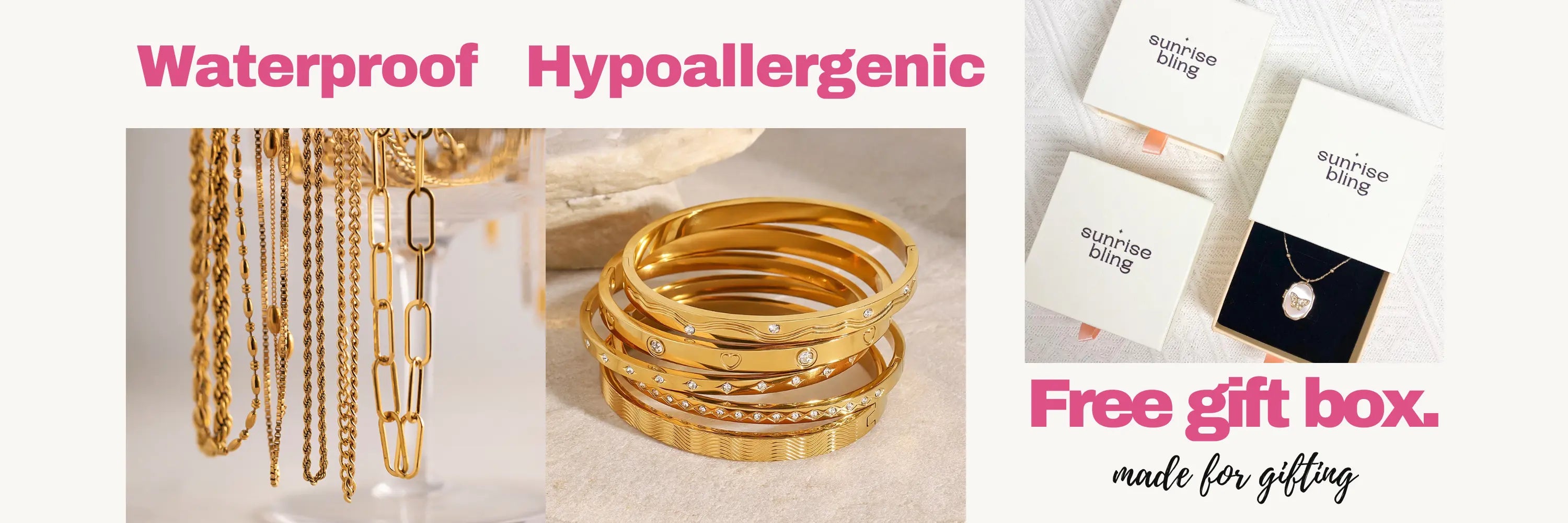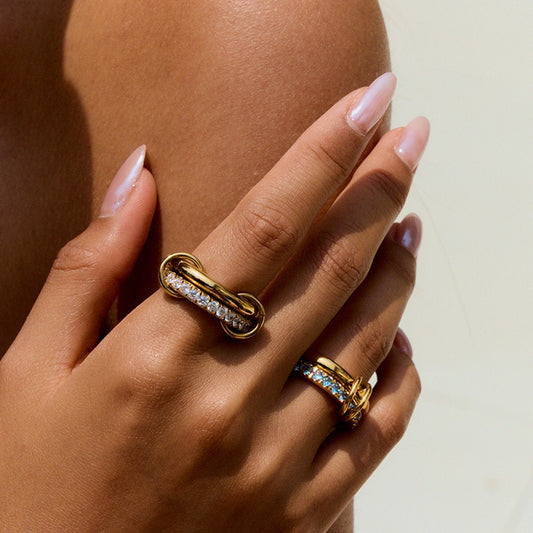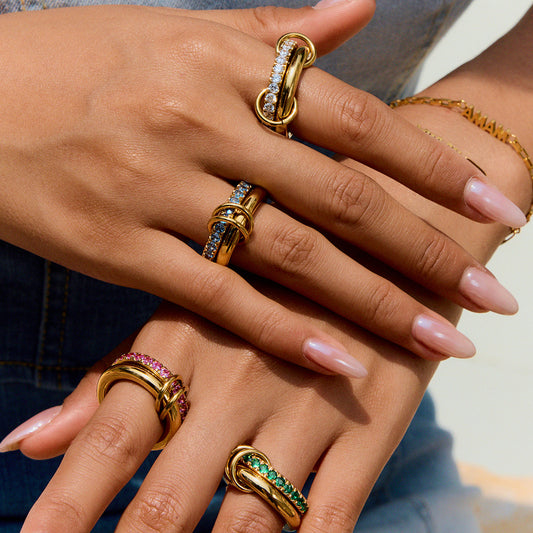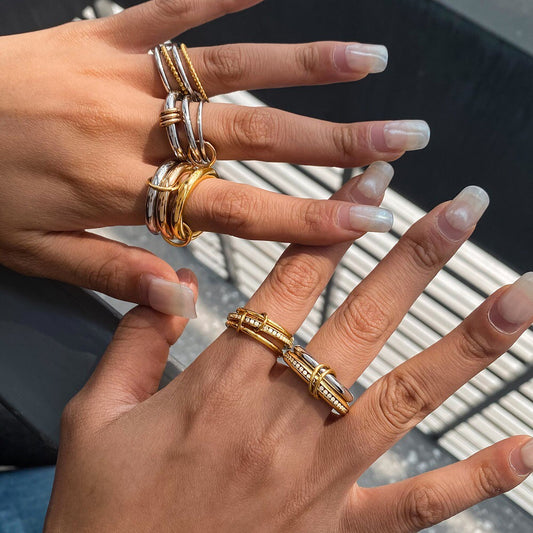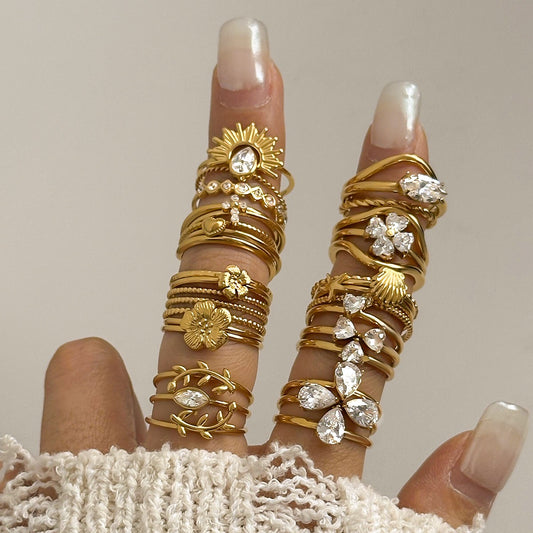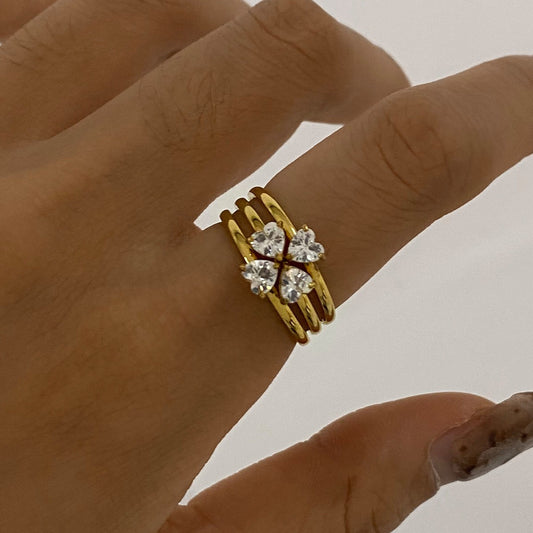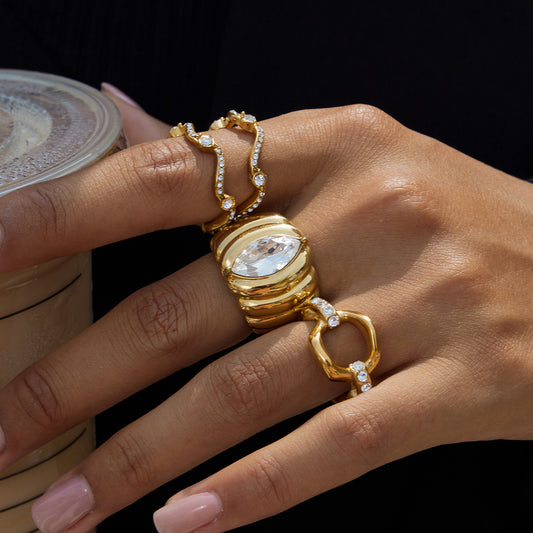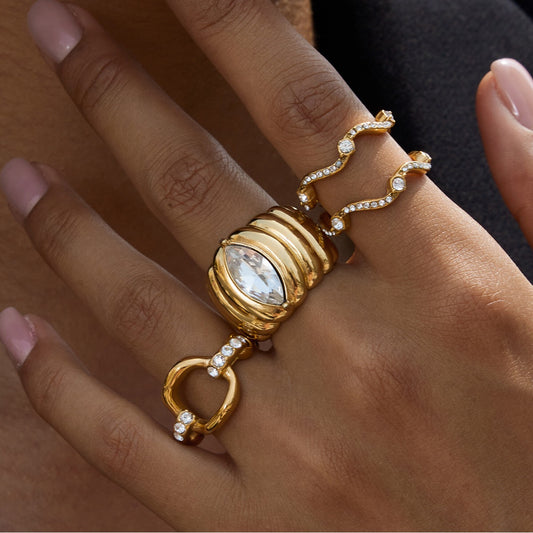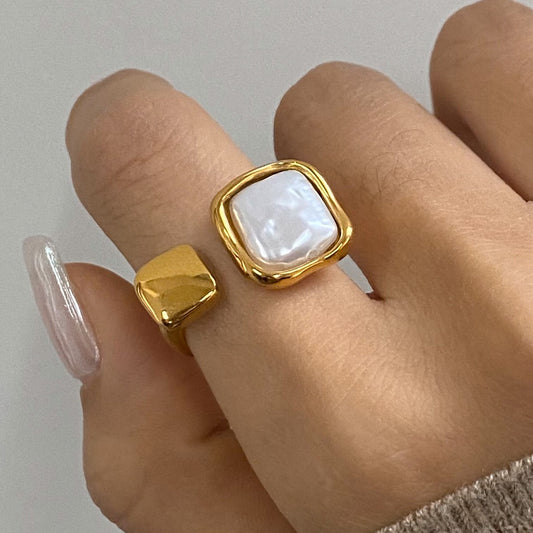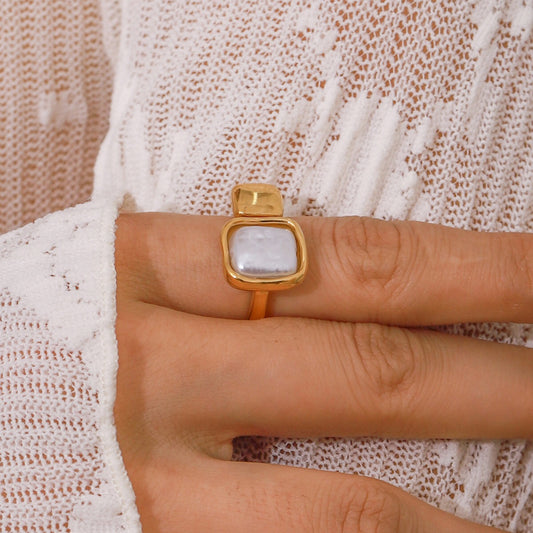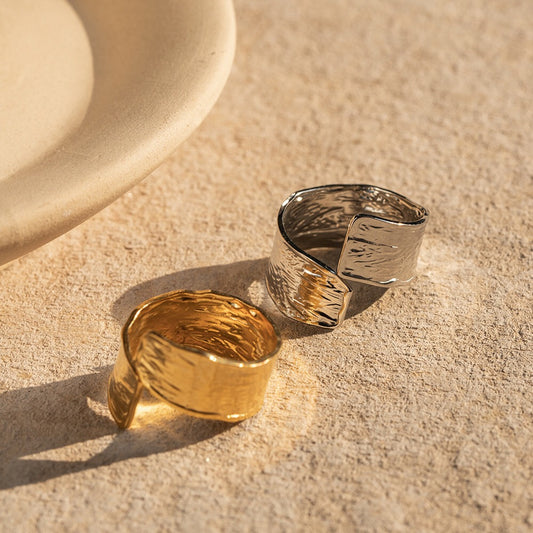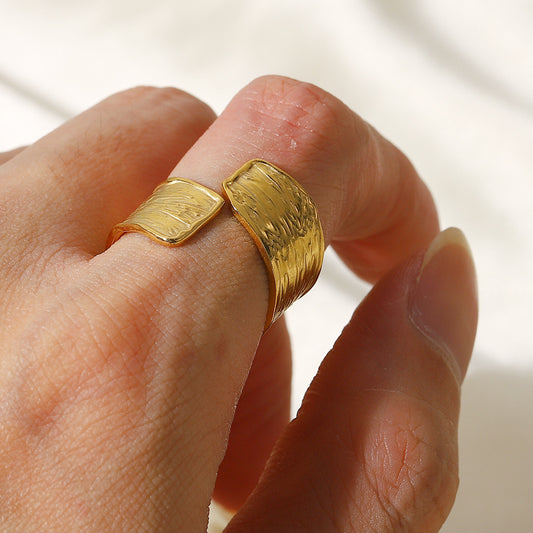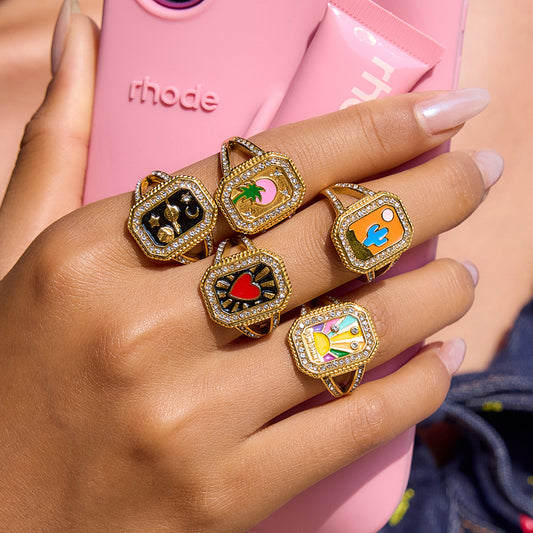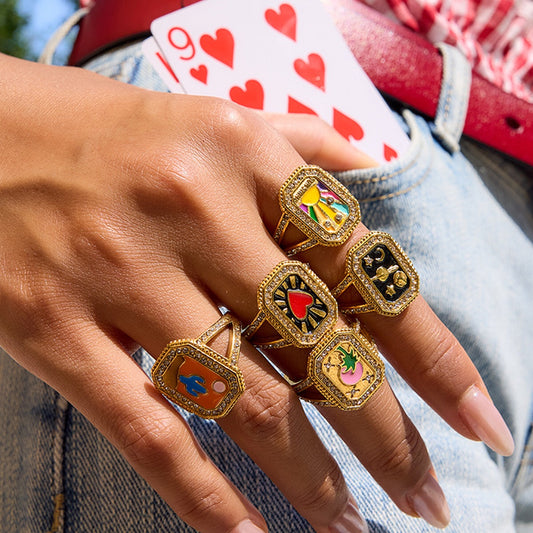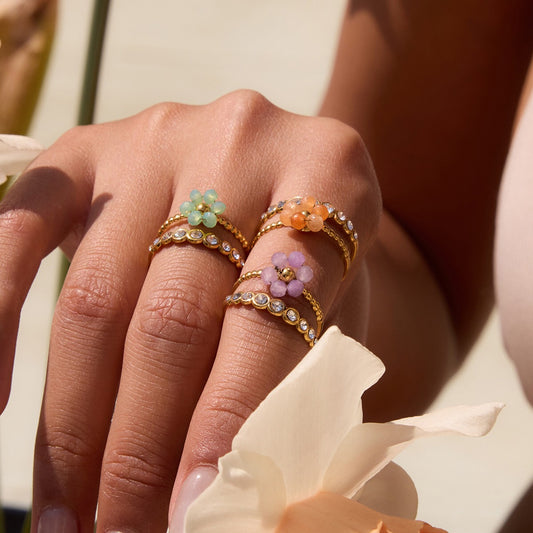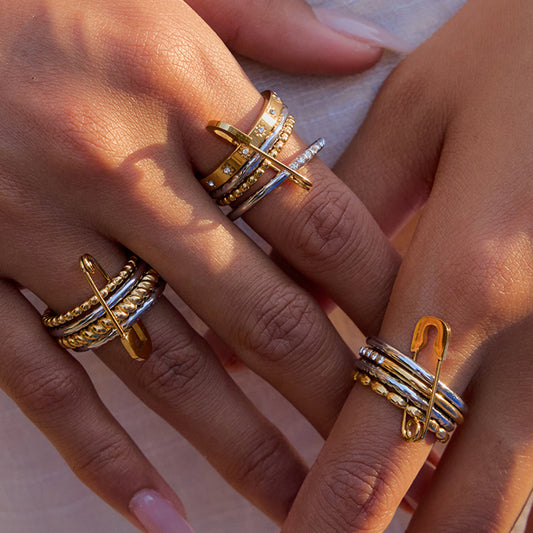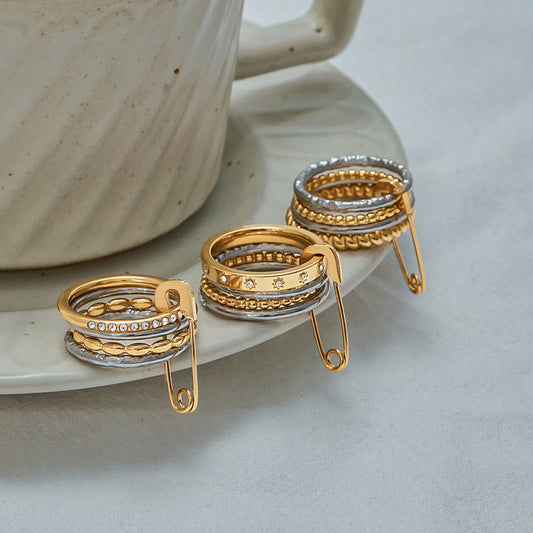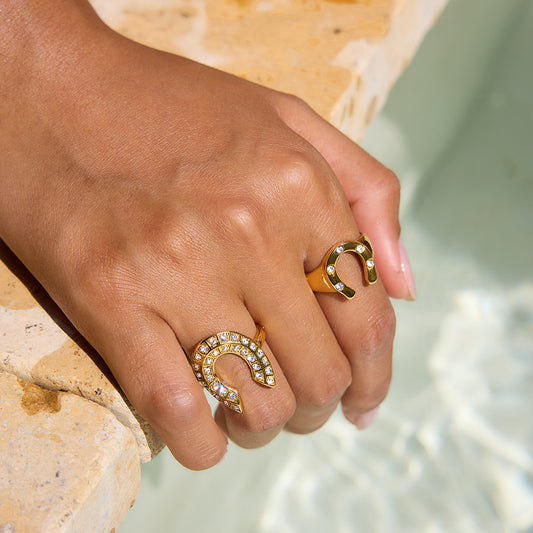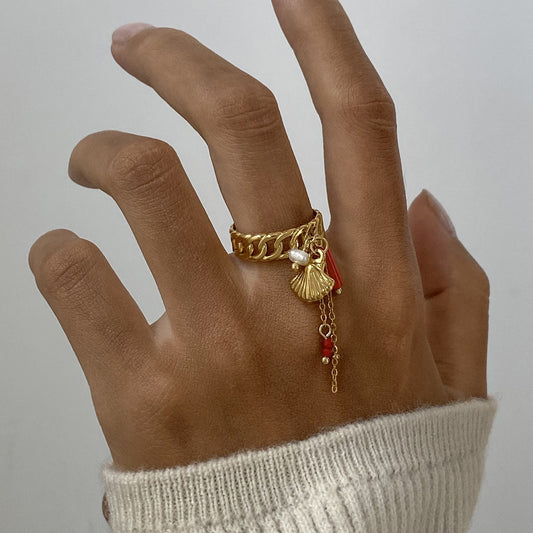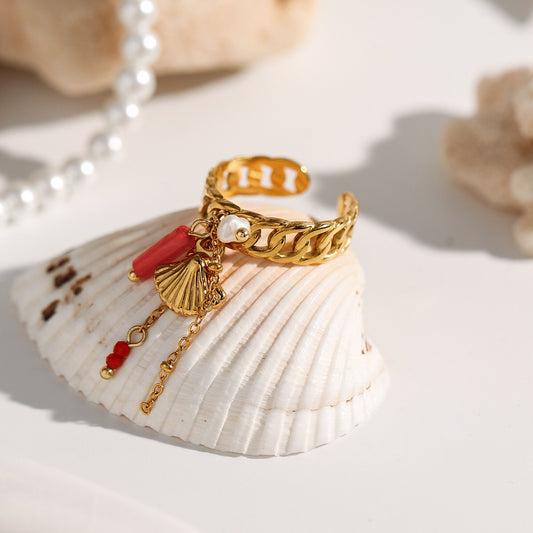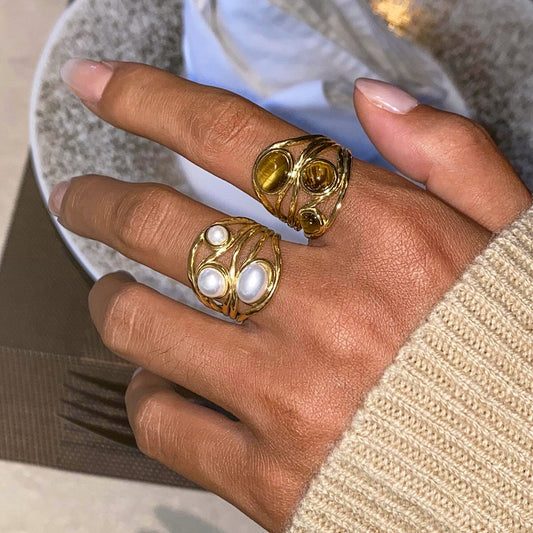Sapphire rings have long been synonymous with luxury, loyalty, and enduring beauty—from royal engagement rings (think Princess Diana’s iconic blue sapphire) to everyday statement pieces. Sapphire Jewelry Market size is estimated to be USD 10.5 Billion in 2024 and is expected to reach USD 15.2 Billion by 2033 at a CAGR of 4.9%. Unlike fleeting trend gemstones, sapphires are a 9 on the Mohs scale (second only to diamonds in hardness), making them ideal for daily wear—while their range of hues (from classic blue to vibrant pink, yellow, and green) ensures there’s a sapphire ring for every taste. Whether you’re celebrating a milestone, honoring a September birthday, or simply craving a touch of regal elegance, sapphire rings blend practicality with unparalleled beauty.
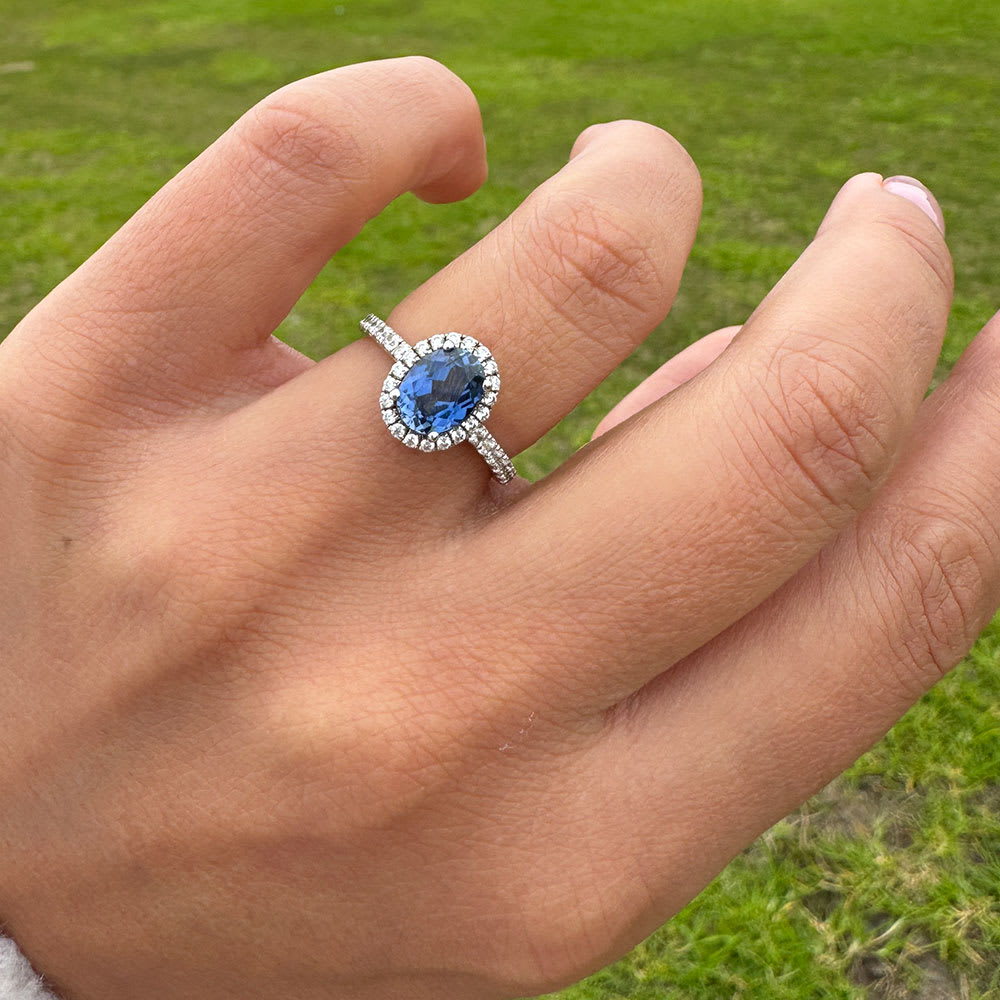
What Are Sapphire Rings?
Before exploring their appeal, it’s essential to understand what defines a sapphire ring and what makes sapphires unique among gemstones. A sapphire ring centers on one or more sapphires—corundum gemstones (the same mineral family as rubies)—set in a metal band, with designs ranging from minimalist solitaires to ornate vintage styles.
Core Characteristics of Sapphires
Sapphires are prized for three key traits that make them stand out:
-
Hardness: At 9 on the Mohs scale, sapphires are extremely durable—resistant to scratches, chips, and daily wear. This makes them ideal for engagement rings, wedding bands, or everyday pieces.
-
Color Range: While blue sapphires are the most iconic, sapphires come in nearly every color except red (red corundum is classified as ruby). Popular “fancy” sapphire hues include pink, yellow, green, purple, and even colorless (white sapphires—a budget-friendly diamond alternative).
-
Clarity & Luster: High-quality sapphires have excellent clarity (few inclusions) and a bright, vitreous luster that catches light beautifully. Unlike diamonds, sapphires often have subtle inclusions that add to their uniqueness (no two are identical).

Common Types of Sapphires Used in Rings
The type of sapphire impacts the ring’s look, value, and symbolism:
-
Blue Sapphire: The most traditional variety, ranging from pale sky blue to deep royal blue. Kashmir blue sapphires (rare, with a “velvety” hue) are the most valuable, while Montana blue sapphires (from the U.S.) offer vibrant, affordable options.
-
Pink Sapphire: Romantic and feminine, with hues from soft blush to vivid magenta. Popular for engagement rings and anniversary gifts, as they symbolize love and affection.
-
Yellow Sapphire: Bright and cheerful, ranging from lemon yellow to golden honey. Associated with prosperity and joy, making them great for milestone celebrations.
-
White Sapphire: Colorless, with a similar sparkle to diamonds but at a lower price point. Ideal for those who love the “diamond look” but prefer ethical, budget-friendly alternatives.
Why Are Sapphire Rings So Popular?
Their enduring popularity stems from four unbeatable factors: regal symbolism, durability, color versatility, and cross-cultural appeal. Sapphire rings aren’t just jewelry—they’re statements of style and meaning.

Rich Symbolism Across Cultures
Sapphires have been revered for millennia for their symbolic weight:
-
Royalty & Prestige: For centuries, sapphires have adorned royal crowns, tiaras, and engagement rings (e.g., Princess Diana’s blue sapphire ring, now worn by Kate Middleton). They symbolize power, wisdom, and nobility.
-
Loyalty & Love: In modern times, blue sapphires are a top choice for engagement rings, as they represent faithfulness and lifelong commitment. Pink sapphires take this further, symbolizing romantic love and passion.
-
Spirituality: Many cultures link sapphires to spiritual growth—blue sapphires for calm and clarity, yellow sapphires for abundance, and pink sapphires for heart-centered energy.
-
Birthstone Significance: As the September birthstone, sapphire rings make deeply personal gifts for anyone born that month, carrying the promise of protection and good fortune.
Durability for Everyday Wear
Unlike delicate gemstones (e.g., opals, pearls), sapphires’ hardness (9 on the Mohs scale) makes them perfect for daily use. A sapphire ring can withstand hand-washing, typing, and even light physical activity without scratching or chipping—making it ideal for busy lifestyles, engagement rings, or forever pieces.

Versatile Color for Every Style
Sapphires’ diverse hues ensure they complement any aesthetic:
-
Classic Elegance: A royal blue sapphire solitaire in yellow gold evokes timeless glamour.
-
Modern Minimalism: A white sapphire in a thin white gold band suits understated tastes.
-
Playful Personality: A pink or yellow sapphire in a mixed-metal setting adds vibrancy to casual looks.
This versatility means sapphire rings work for every occasion—from board meetings to beach weddings.
Ethical & Budget-Friendly Alternatives
Sapphires offer ethical and affordable options for conscious shoppers:
-
Lab-Grown Sapphires: Chemically identical to natural sapphires but grown in labs, they’re conflict-free, more affordable (30–50% less than natural), and have fewer environmental impacts.
-
White Sapphires: A budget-friendly alternative to diamonds, with similar durability and sparkle—perfect for engagement rings or everyday pieces.

Popular Styles of Sapphire Rings
Sapphire rings come in a range of designs to suit every taste, from classic to contemporary. Here are the most sought-after styles:
Classic Sapphire Solitaire Rings
The most timeless style, classic sapphire solitaires feature a single sapphire (often round, oval, or cushion-cut) in a simple metal setting. Think:
-
A royal blue sapphire solitaire in yellow gold (evoking vintage royal elegance).
-
A pink sapphire solitaire in rose gold (romantic, feminine—ideal for engagement rings).
-
A white sapphire solitaire in platinum (sleek, modern—diamond alternative).
This style lets the sapphire’s color and luster take center stage, making it perfect for those who love understated luxury.
Sapphire Halo Rings
Halo rings feature a central sapphire surrounded by a “halo” of smaller gemstones (usually diamonds or white sapphires), amplifying the main stone’s sparkle and size. Popular variations include:
-
A blue sapphire halo ring with diamond accents (regal, perfect for engagement rings).
-
A pink sapphire halo ring with pink diamond halos (monochromatic, romantic).
-
A yellow sapphire halo ring with white sapphire halos (bright, cheerful—great for birthdays).
Halo styles add drama without overwhelming the sapphire, making them ideal for special occasions.
Vintage-Inspired Sapphire Rings
Drawing inspiration from the Victorian, Art Deco, and Edwardian eras, vintage sapphire rings blend old-world charm with regal color:
-
Victorian: Filigree metalwork, floral patterns, and sapphires paired with pearls or small diamonds. A Victorian blue sapphire ring in rose gold feels romantic and timeless.
-
Art Deco: Geometric shapes (squares, triangles), bold lines, and contrasting metals (black enamel with gold) paired with blue or white sapphires. Sleek and dramatic, perfect for cocktail parties.
-
Edwardian: Delicate platinum settings with milgrain edging and lace-like filigree—often paired with pale blue or white sapphires for a soft, elegant look.
Vintage sapphire rings are ideal for antique lovers or anyone who wants to add a touch of history to their jewelry collection.
Modern Sapphire Stackable Rings
For contemporary style, stackable sapphire rings feature thin bands with small sapphires (1–2mm) in simple settings. They’re designed to be layered with other rings (plain metal, diamond, or other gemstones) for a personalized look:
-
A thin blue sapphire band in silver, stacked with a gold band and a tiny diamond band.
-
A set of three stackable rings: one pink sapphire, one yellow sapphire, and one white sapphire—perfect for mixing and matching.
Stackable styles are great for everyday wear, as they’re lightweight and versatile.
How to Wear & Style Sapphire Rings
Wearing a sapphire ring is easy—its durability and color versatility make it simple to incorporate into any outfit. A few tips can help you maximize its impact:
Pairing with Outfits: Colors & Occasions
Sapphires’ hues complement a wide range of colors, making them adaptable to any look:
-
Casual Wear: A small blue sapphire stackable ring pairs with jeans and a white t-shirt, while a yellow sapphire solitaire adds cheer to a sundress. For a boho vibe, layer a pink sapphire ring with leather bracelets.
-
Work Wear: Stick to understated styles— a white sapphire solitaire in silver, a thin blue sapphire band, or a small pink sapphire halo ring. These add elegance to blazers, midi skirts, or button-downs without distracting colleagues.
-
Formal Wear: Make a statement with a bold sapphire ring— a blue sapphire halo ring with diamonds, a vintage Art Deco sapphire ring, or a large yellow sapphire cocktail ring. Pair with black, navy, or gold gowns to let the sapphire’s color shine.
Choosing the Right Metal for Your Sapphire
The metal setting can enhance the sapphire’s hue and your skin tone:
-
Blue Sapphires:
-
Warm Skin Tones (yellow/peach undertones): Yellow gold or rose gold (brings out the sapphire’s warmth).
-
Cool Skin Tones (pink/blue undertones): White gold or platinum (makes the blue appear brighter and more vibrant).
-
Pink Sapphires: Rose gold (amplifies pink’s romance), white gold (creates a fresh contrast).
-
Yellow Sapphires: Yellow gold (monochromatic luxury), white gold (bright, modern contrast).
-
White Sapphires: Any metal—platinum for sleekness, rose gold for warmth, yellow gold for vintage charm.
Layering Sapphire Rings
Layering is a great way to personalize your look with sapphire rings:
-
Same Finger: Stack 2–3 thin sapphire bands (e.g., blue + white + gold) for a trendy, mixed-metal look. Avoid stacking thick rings—they can feel bulky.
-
Different Fingers: Wear a statement sapphire ring (e.g., a halo style) on your ring finger and a thin stackable sapphire band on your index or middle finger.
-
With Other Gemstones: Pair a sapphire ring with diamond earrings or a pearl necklace for a cohesive, elegant look. Avoid mixing too many colorful gemstones—let the sapphire be the focal point.
Sapphire Rings: Perfect Gift for Every Milestone
Sapphire rings are thoughtful, meaningful gifts—their symbolism, durability, and beauty make them ideal for celebrating life’s big moments.
Why They’re a Meaningful Gift
-
Birthstone Connection: As the September birthstone, a sapphire ring is a personal way to honor someone’s birthday—add an engraved message (e.g., their name, birthdate) for extra sentiment.
-
Symbolic Value: Blue sapphires for loyalty, pink for love, yellow for joy—you can choose a hue that aligns with the occasion (e.g., a blue sapphire for a 5th wedding anniversary, a pink sapphire for a engagement).
-
Durability: Sapphires last a lifetime, so the gift will be cherished for years—even passed down as an heirloom.
Choosing the Right Sapphire Ring for the Recipient
Tailor the design to their taste and lifestyle:
-
Minimalists: A thin sapphire stackable band or a small solitaire (white or pale blue sapphire).
-
Romantics: A pink sapphire halo ring or a vintage-inspired blue sapphire ring with pearls.
-
Trendsetters: A lab-grown blue sapphire engagement ring or a set of colorful stackable sapphire rings.
-
Everyday Wearers: A durable bezel-set sapphire ring (bezel settings protect the gemstone) in 14k gold or sterling silver.
Occasions to Gift Sapphire Rings
-
September Birthdays: The most obvious choice—pair with a card explaining sapphire’s symbolism (protection, good fortune).
-
Engagements/Weddings: Blue sapphire rings for loyalty, pink sapphires for love—ideal for couples seeking an alternative to diamonds.
-
Anniversaries: Sapphires are the traditional 5th and 45th wedding anniversary gemstones—perfect for marking years of commitment.
-
Career Milestones: A white sapphire ring for a promotion or new job—symbolizes clarity and success.
How to Clean & Care for Sapphire Rings
Sapphires are durable, but proper care ensures they stay bright and beautiful for decades:
Daily Care Tips
-
Remove Before Harsh Activities: Take off your sapphire ring before swimming (saltwater/chlorine can damage the metal setting), gardening, working out (sweat can dull the metal), or using harsh chemicals (cleaning products, perfume).
-
Wipe After Wear: After wearing, gently wipe the ring with a soft microfiber cloth to remove oil, lotion, or dirt. This prevents buildup that can dull the sapphire’s luster.
-
Avoid Extreme Temperatures: Sapphires can withstand heat, but sudden temperature changes (e.g., placing a hot ring in cold water) can crack the gemstone or loosen the setting.
Deep Cleaning Steps (Every 2–4 Weeks)
Sapphires are easy to clean—use mild, non-abrasive methods:
-
Mix warm water with a drop of mild dish soap (unscented) in a bowl.
-
Soak the sapphire ring for 10–15 minutes to loosen dirt and grime.
-
Gently scrub the sapphire and setting with a soft-bristled toothbrush (avoid using a stiff brush—this can scratch the metal).
-
Rinse under warm running water and pat dry with a microfiber cloth.
-
For extra shine, polish the metal setting with a jewelry cloth (avoid cloths with harsh chemicals, which can damage the sapphire).
Storage Tips
-
Store the sapphire ring in a soft jewelry pouch or a separate compartment in your jewelry box to prevent scratches from other gemstones (e.g., diamonds).
-
For vintage or delicate settings, wrap the ring in tissue paper to protect filigree or enamel details.
-
Avoid storing the ring in humid areas (e.g., bathrooms)—moisture can tarnish metal settings.
Frequently Asked Questions About Sapphire Rings
If you’re considering a sapphire ring—for yourself or as a gift—here are answers to common questions:
Are Sapphire Rings a Good Alternative to Diamond Engagement Rings?
Absolutely! Sapphires are nearly as hard as diamonds (9 vs. 10 on the Mohs scale), making them durable enough for daily wear. They’re also more affordable (especially lab-grown or fancy-colored sapphires) and offer more color options than diamonds. Many couples choose sapphire engagement rings for their uniqueness and symbolic value (loyalty, love).
How Can I Tell If a Sapphire in a Ring Is Real?
Real sapphires have key traits that fake sapphires (often glass or synthetic spinel) lack:
-
Hardness: Real sapphires scratch glass (try this only with the jeweler’s permission!). Fake sapphires will either not scratch glass or will scratch easily themselves.
-
Color: Real sapphires have even, vibrant color—fake sapphires often have uneven coloring or a “painted” look.
-
Inclusions: Real sapphires may have subtle inclusions (visible under a magnifying glass), while fake sapphires often look “too perfect.”
For certainty, ask a jeweler to test the sapphire with a refractometer (sapphires have a unique refractive index).
Do Sapphires Fade Over Time?
No—sapphires are color-stable and won’t fade with regular wear or exposure to light (unlike some gemstones, like amethyst). However, harsh chemicals (e.g., bleach, perfume) can damage the metal setting or dull the sapphire’s luster—so always remove your ring before using these products.
Conclusion: Embrace Regal Elegance with a Sapphire Ring
Sapphire rings are more than just jewelry—they’re symbols of loyalty, beauty, and timeless style. Whether you’re celebrating a September birthday, saying “I do,” or simply adding a touch of regal glamour to your wardrobe, a sapphire ring offers durability, versatility, and meaning that lasts a lifetime. With hues ranging from classic blue to playful pink and yellow, there’s a sapphire ring to suit every taste and story.
Ready to find your perfect sapphire ring? Explore our curated collection today—from everyday stackable bands to luxurious engagement-worthy halos. Whether you’re treating yourself or gifting a loved one, a sapphire ring is sure to become a cherished piece for years (or generations) to come. Don’t wait—add a touch of regal color to your jewelry box now!


